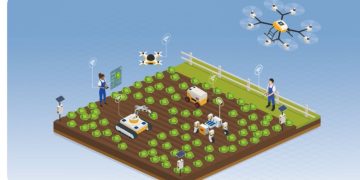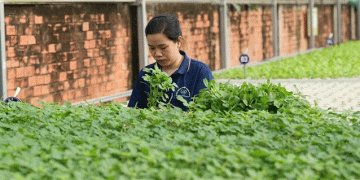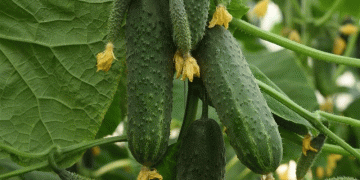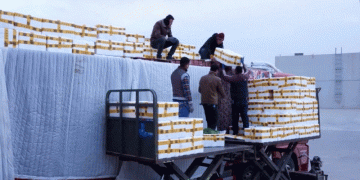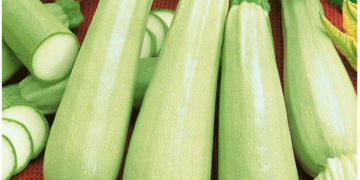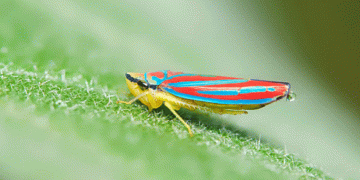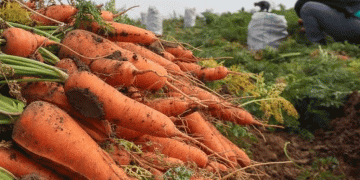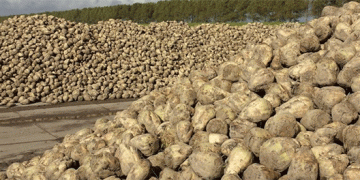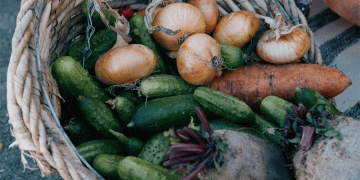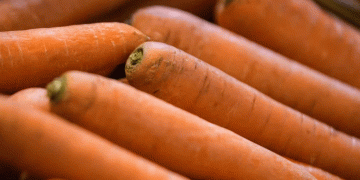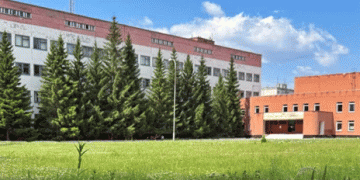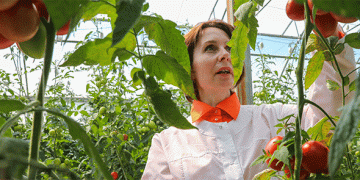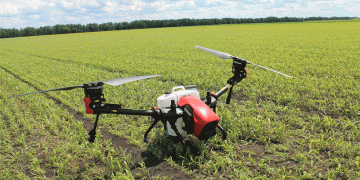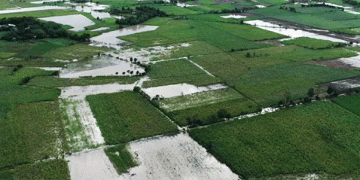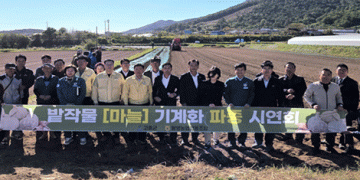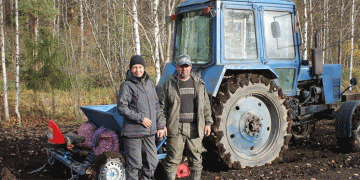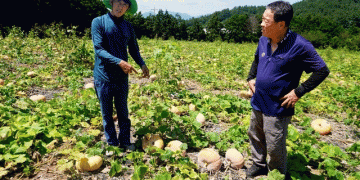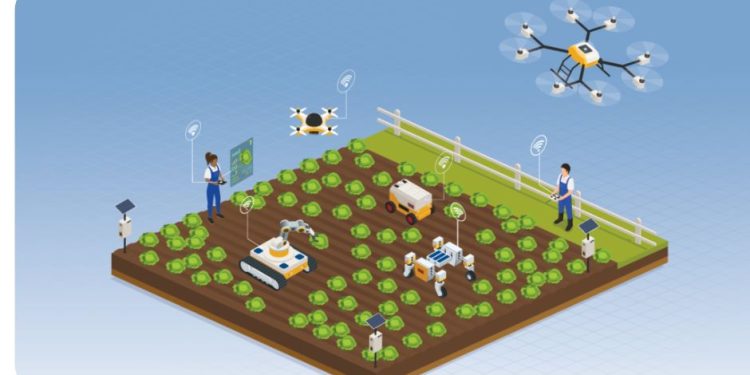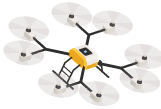Cutting-edge growers, researchers and dreamers agree on one thing: Vegetable farming 20 years from now will be much different than it is today.
Changes will likely come not just from robots, advancements in plant genetics, use of the Internet of Things – or any other single discipline – but where those inroads cross later in the future, said David C. Slaughter, a biological and agricultural engineering professor at the University of California-Davis, and champion of its Smart Farm initiative.
“Just in general in the future, we’re going to see these opportunities that a variety of different technologies are going to bring, both in terms of biotechnology as well as artificial intelligence and robotics technology,” Slaughter said. “A number of technologies are going to come together.”
Planting
Where and how growers plant could drastically change in the next 20 years.
Futurist and strategic advisor Daniel Burrus said that climate change could make controlled environment agriculture more favorable for growers.
“Think of it as weather chaos,” he said. “Growers don’t like weather chaos, and you can get enormous stability indoors.”
“Where we grow our vegetables is going to change,” said futurist and author Jack Uldrich. Leafy greens are already being grown in urban farms.
Some other shifts are likely to take place due to climate change, he said.
“The Corn Belt is already moving north – moving out of Iowa and into Minnesota – and in 50 years it could be in Canada.”
Lynn Trizna manages St. Luke’s Rodale Institute Organic Farm, a farm-to-hospital operation located on 11.5 acres in eastern Pennsylvania. She’s seen how much the weather can change from year to year, and the importance for growers to be resilient and able to change with the climate. For her, that means investing in the soil with “intense cover cropping” and soil tests.
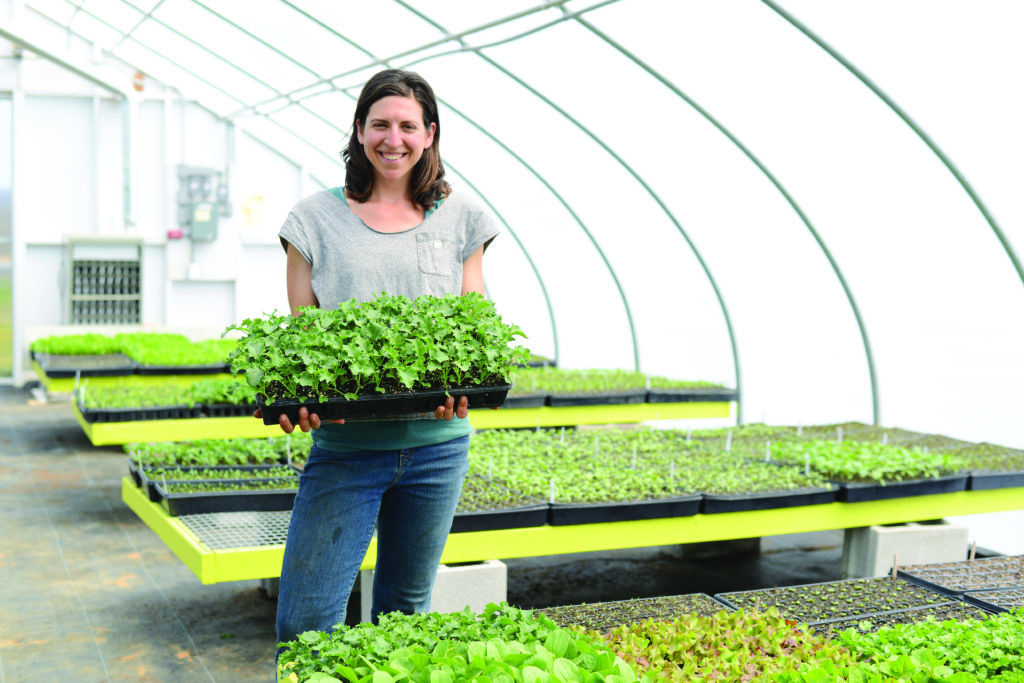
“We have a certain game plan of what we would like to do, but then we also have options for what if this happens, or what if that happens,” she said.
Exceptionally healthy soil gives the farm some flexibility and long-term endurance.
“We won’t sacrifice soil health for production, because that’s not going to help us in the long run,” she said.
Planting machinery also will also change.
“We imagine planting technology will have two roles,” Slaughter said. The first role would be to correctly and cheaply plant the seeds at the right depth and in the correct manner. The second role would be a little less tangible: Starting a database of the plants in the field.
“You would get the latitude and longitude for every plant,” he said.
Those data points would be the foundation for precision agriculture throughout the season as growers use data to track not only problem spots in their fields but even particular plants – an advanced form of the precision agriculture that’s already begun in the present day.
Scouting and sensing
Scouting and sensors are important in precision agriculture because they populate the data on the plants and allow growers to finetune their growing techniques.
Drones are starting to be used for scouting, and Slaughter sees a use for them in the future.
“On a commercial scale, you can see an application for an aerial platform,” he said. But he said there are some things that can’t be seen or sensed from 300-350 feet above.
Slaughter said there’s been some work done on attaching sensors directly to the plants rather than the soil probes used now. The sensors would relay information back to the farm office where decisions could be made about irrigation on a block-by-block, row-by-row or even, eventually, a plant-by-plant basis – depending on how the farm is set up.
“When the economics and all the other pieces come into place that would allow this to happen, I’m not really sure,” he said. “But that’s one of the concepts, I think, in the farm of the future, is this co-increasing the spatial and temporal resolution of care to add a lot more automation and advanced machine learning and knowledge-based techniques to make bigger decisions better and in a more widespread way.”

Uldrich went one step beyond drones. Satellites could be a bigger part of scouting in the vegetable farm of the future, he said.
The ability to land and re-use rockets – recently proven by tech’s leading man, Elon Musk – seems to indicate that launching the satellites will be cheaper in the future.
Burrus said 20 years from now, soil sensors could be not only “smart” and networked with other devices, but also biodegradable, due to advances in biocomputing.
That’s hard to envision in an age when almost every device hooked up to the internet is made from silicon, bits of wire and metal.
“There are new and more powerful ways of computing,” Burrus said. “When you look into the future, you don’t want to use the rear-view mirror. You want to use the windshield.”
Tending
Data from sensors would inform how each plant is tended, from pest control to herbicides and even irrigation.
Automated plant-tending technology would give growers the ability to dose out specific amounts of nutrients and water, and establish control of pests and disease.
“We would be able to tailor that,” Slaughter said.
UC Davis has begun work on a Yamaha autonomous sprayer with a GPS navigation system, he said.
A different UC Davis project has focused on spraying pesticides from unmanned aerial vehicles.
Some variable-rate applicators such as Blue River Technology, purchased by John Deere in 2017, already have been in headlines – one piece of equipment that several of our sources noted as being ahead of its time.

Asked if farmers will still go out into their fields at all, Burrus responded with a rhetorical question of his own: Will artificial intelligence put us all out of work?
The answer is no, he said. We will not all lose our jobs, and growers will still go out into their fields. They will just be more educated in using technology as they do so.
“Even with high tech, we like to get a feel of what’s going on,” Burrus said. “We’re seeing things with different eyes than AI; we’re seeing things with different eyes than drones. We need both.”
He said the future of artificial intelligence (AI) is “symbiotic thinking” with humans interfacing with machines to get the best of both worlds.
Research is even changing the way organic growers tend their crops. The Rodale Institute that Trizna works for is dedicated to growing the organic movement not just through advocacy but also research. One recent experiment found that leaving strips of habitat for beneficial insects – natural biological control – was effective in controlling striped cucumber beetle (Acalymma vittatum).
Harvesting
Smart mechanical harvesters have begun to appear for a variety of specialty crops, including strawberries and apples.
“I think it’s here, today, and if people can’t understand how it’s going to transform the industry in 20 years, I don’t think they’re paying attention,” Uldrich said.
Slaughter agreed.
“You’re definitely going to see a move to these cyber-physical systems,” he said. But, once again, it won’t be through technological advances alone. It’s more likely that a robot will work with a human manager or other “biological partner.” And plant breeding programs will be directed on developing crops that robots can more easily harvest.
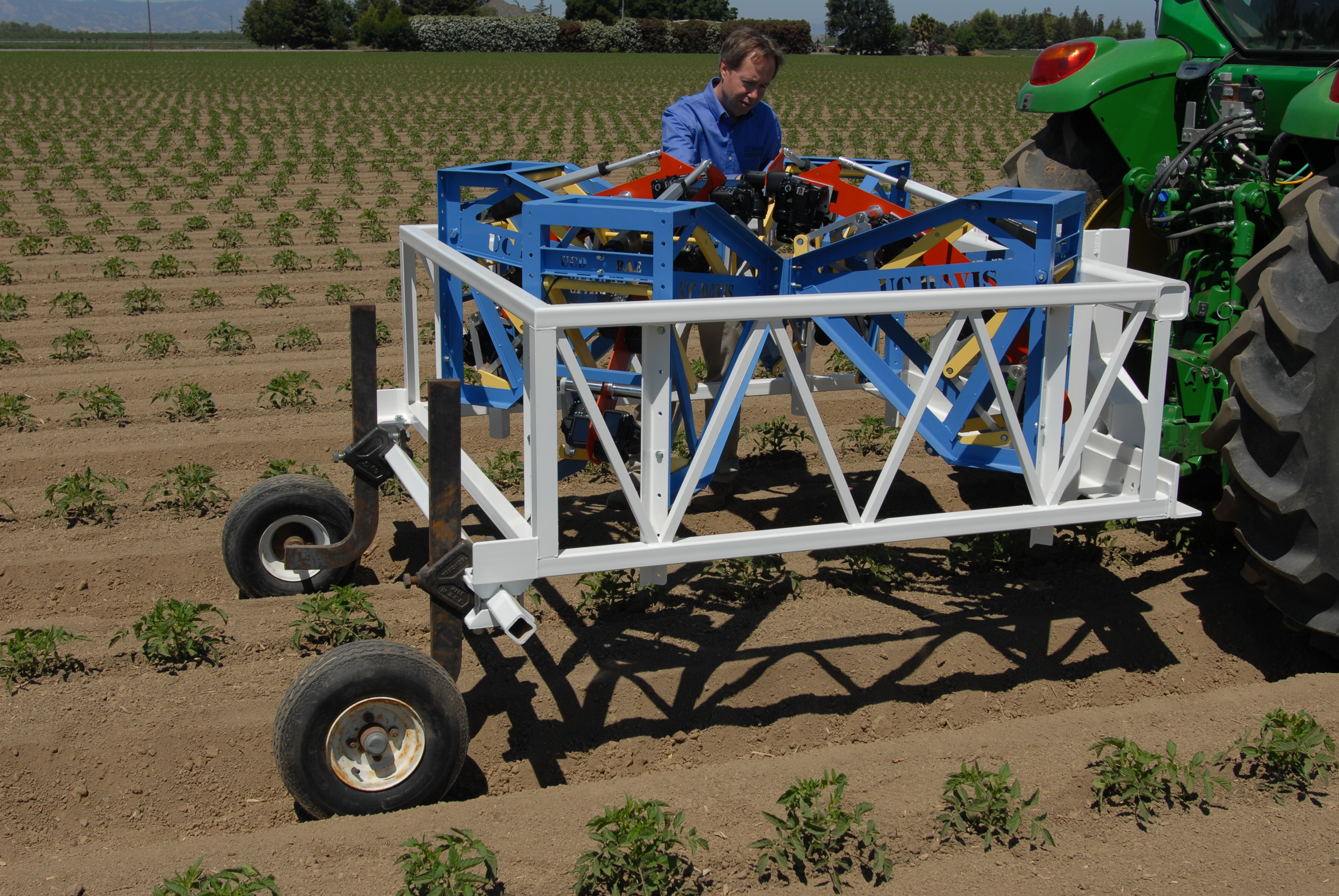
“The stems on the strawberries will be longer; the grapes will hang farther away from the plant,” he said.
How that rolls out in the industry – and how it’s accepted by a variety of growers – isn’t clear.
Trizna said that while many organic farmers do have some basic mechanical harvesting equipment, the technology doesn’t always work well in a variety of environments.
“Being reliant on the equipment is part of our food system,” she said. “Work has to be done to make that equipment accessible and to have some ability to work in different environments.
“I think that the next 20 years will be really important for our food system, and for every farmer,” she said. “I’m hoping soil technology will be done in a way that will benefit farmers and not necessarily benefit corporations,” she said.
Finding a place
Slaughter used an example from history to illustrate how different technologies can come together to change the industry. Two decades of research into a new variety of processing tomato that would ripen at a uniform time and detach well from the plant, and another decade of research into a mechanical harvester, prepared growers for the end of the Bracero labor program in 1964.
“The successes are when we can bring a multi-disciplinary approach,” he said.
Trizna, the organic grower, expressed a concern that organic growers and ecological concerns not be left out of future research.
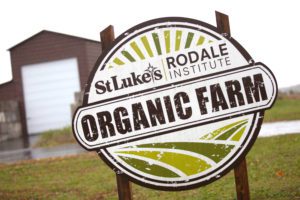
“I would hope that in the next 20 years, people are really looking more closely at organic and doing research into organic, and not just doing research for products, but doing research for the soil,” Trizna said.
Burrus believes the future will bring “continued growth in organics” but also “a new definition of what organic culture will be.”
“Try to learn from bigger operators,” he said. “Try to do some of what they do.”
Uldrich said growers shouldn’t be afraid of the future.
“I don’t want anyone to think the future of the vegetable industry is just going to be controlled by one or two global conglomerates who can afford the robotic technology and the data and all of this,” he said.
Customers will likely still value food grown locally with high quality.
“I think people are going to want to purchase food that is grown by their friends and their neighbors,” Uldrich said.
